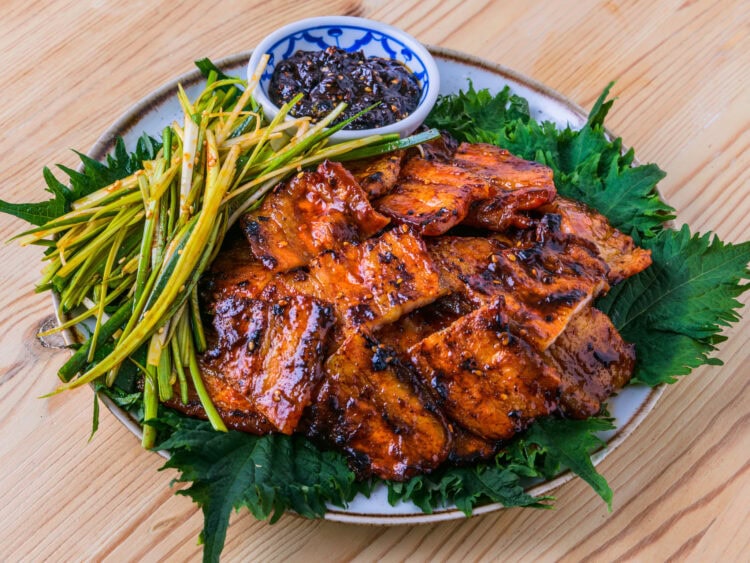A delicious grilled pork belly recipe much better than at a Korean barbecue
Samgyeopsal (삼겹살구이) or samgyeopsal-gui is one of the French people’s favorite Korean dishes. Tender, spicy, and flavorful, it would be difficult to find a fault with this dish.
Whether you prepare it on a stone grill/raclette, in a pan, on a plancha, or on a traditional Korean barbecue, it won’t make much difference to the final result as long as it’s a large, flat, and hot surface. So, no excuses, go ahead and discover this homemade Asian recipe!

What is Samgyeopsal?
Along with beef bulgogi, jeyuk bokkeum, and all the banchan, it’s part of the family of dishes typically served at a Korean barbecue. Its name literally translates to “three-layer meat” to describe pork belly. As you’ve understood, here the cut of meat is specified. It’s also part of the Anju, dishes served alongside alcohol, along with Jokbal

Fun fact, it’s commonly called Samgyeopsal but that’s not quite correct, the suffix “-gui” indicates that it’s grilled or roasted. So, the full name: grilled pork belly
How to eat Samgyeopsal-gui?
Traditionally, the meat is cooked whole, and then cut with scissors into small bites.
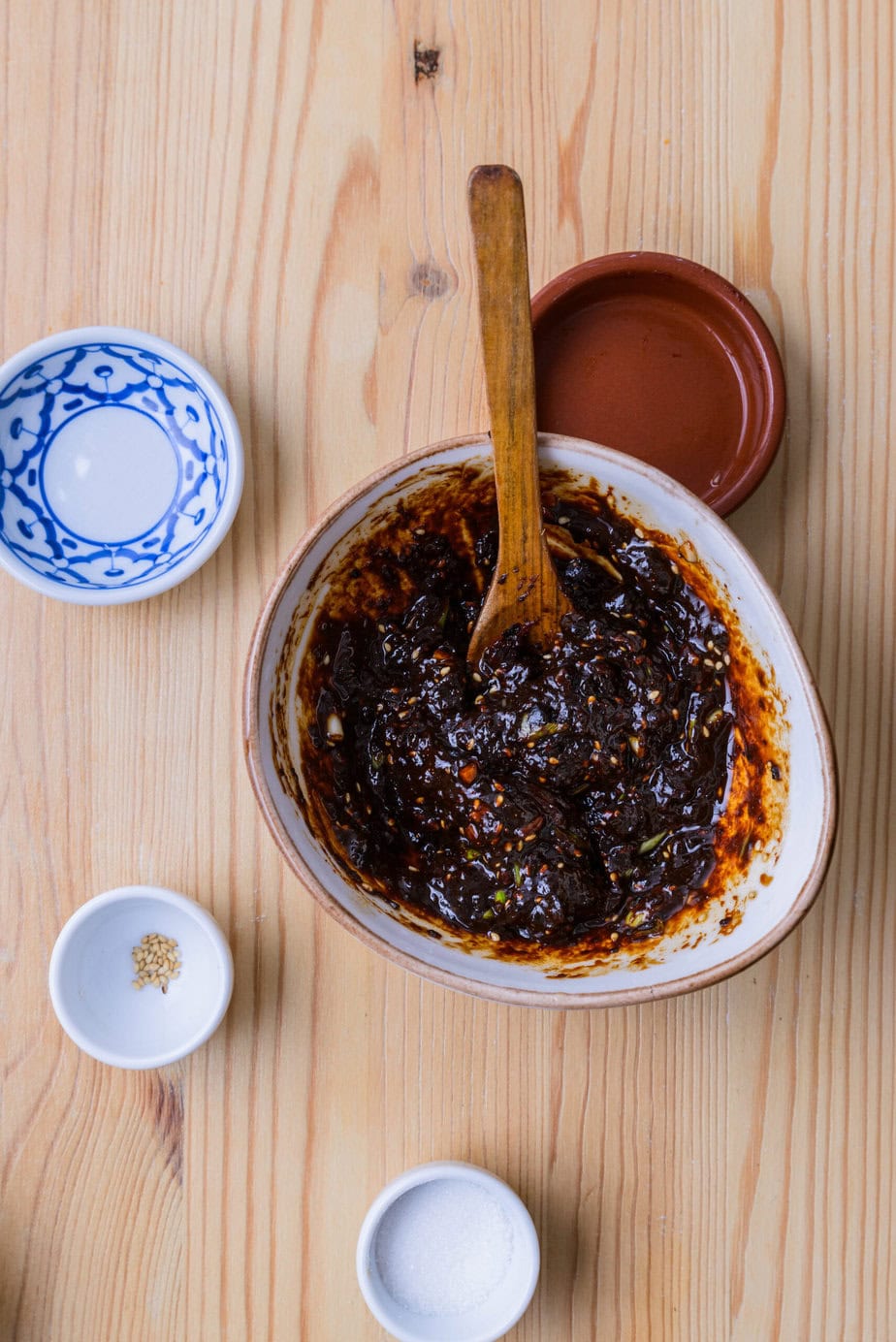
Then, we take these pieces with a nice lettuce leaf or shiso, add a few slices of garlic or bell pepper, and most importantly, don’t forget a good homemade ssamjang sauce. The green onion salad (pajeori) is also sometimes served with it
The main ingredients of Samgyeopsal
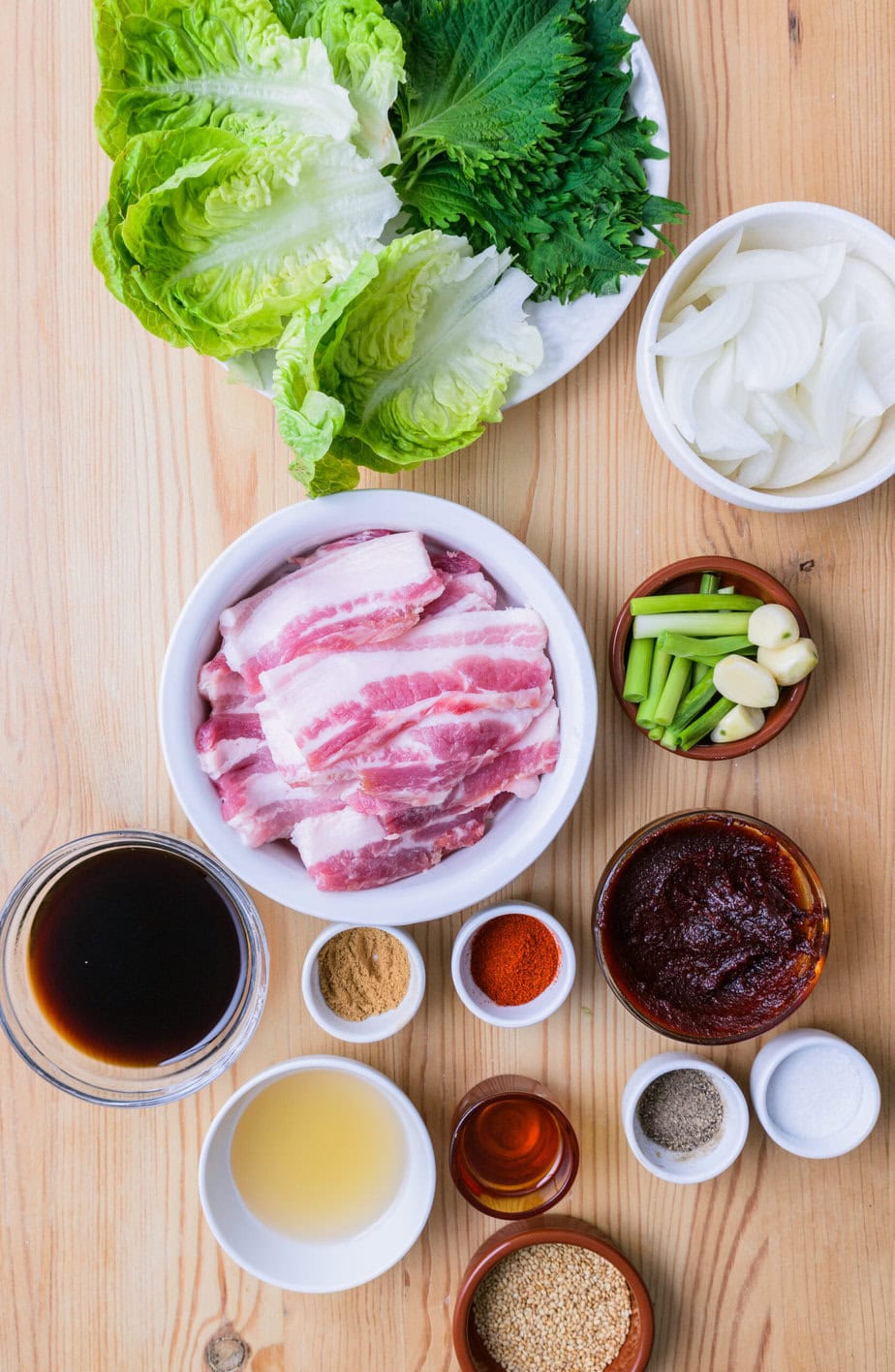
Pork belly: As discussed earlier, this dish is defined by the use of (unsalted) bacon
Light soy sauce: Classic salty soy sauce found in supermarkets. Brings a good dose of umami and saltiness to the marinade
The mirin: sweet Japanese rice wine, it’s also widely used in Korea to add sweetness to Asian sauces and marinades
Sesame oil: adds a delicious sesame flavor
Gochugaru and gochujang: Korean chili powder and chili paste, they are full of umami and are used in the ssamjang and marinade
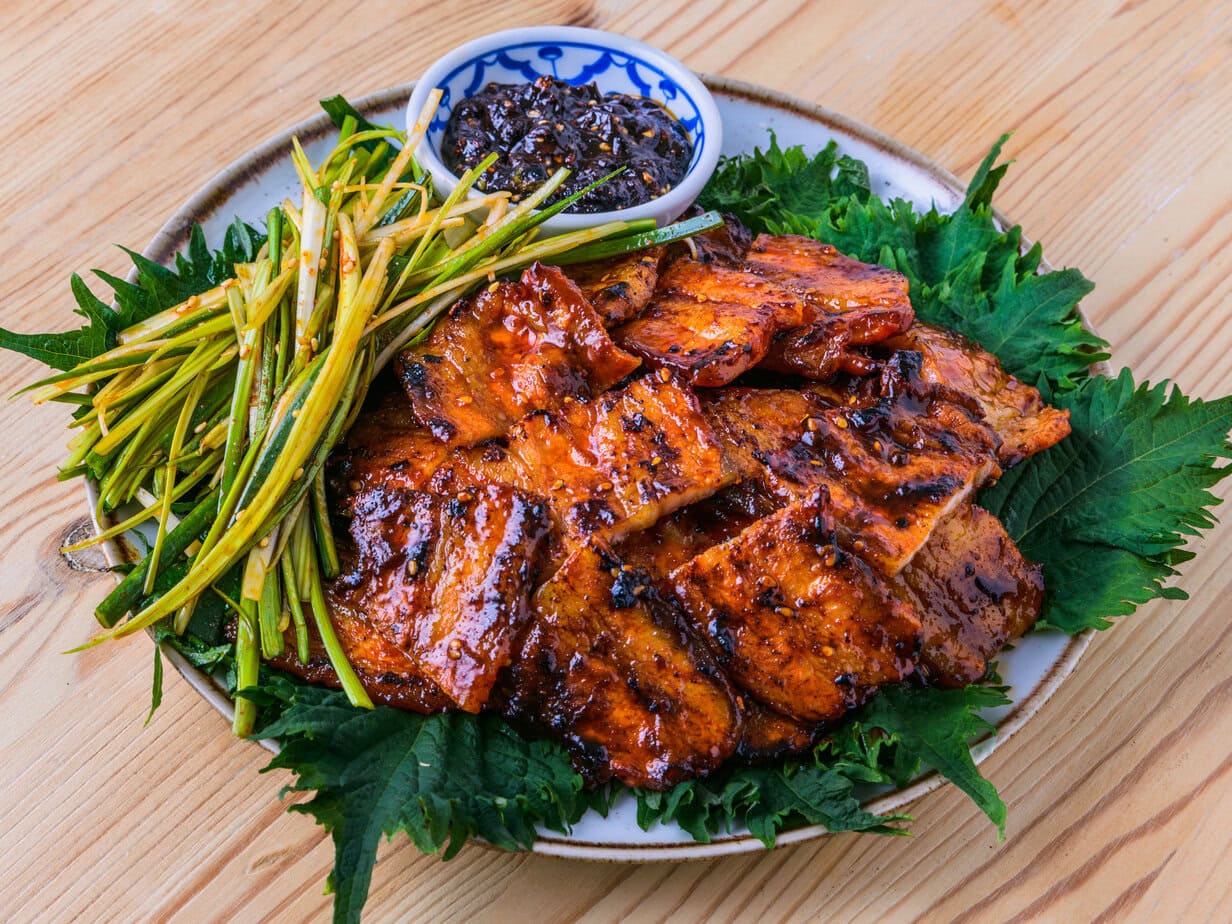
Authentic Samgyeopsal – Korean Grilled Pork
Ingredients
- 750 g pork belly in long thin slices
Marinade
- 1 medium onion sliced
- 3 stems of green onion cut into 5 cm pieces
- 4 pods garlic sliced
- 0.25 teaspoon of ground ginger
- 120 g of gochujang
- 60 g light soy sauce
- 1 teaspoon by gochugaru
- 3 tablespoons of mirin
- 1 tablespoon sesame oil
- 1 tablespoon of sesame seeds
- 1 tablespoon of sugar
- 1 teaspoon of ground black pepper
Homemade Ssamjang
- 60 g of doenjang
- 1 green onion chopped
- 0.5 clove garlic chopped
- 1 tablespoon of gochujang
- 1 teaspoon of sugar
- 1 teaspoon of sesame seeds toasted
- 0.5 tablespoon sesame oil toasted
Green Onion Salad (pajeori)
- 8 green onions finely sliced, see photo
- 30 g light soy sauce
- 1 teaspoon of sugar
- 0.5 tablespoon of sesame seeds toasted
- 0.5 tablespoon sesame oil toasted
- 1 tablespoon by gochugaru
To serve
- Salad
- Leaves of shiso
Instructions
Green Onion Salad
- Finely slice the green onions

- Soak the sliced green onions in cold water for 5 minutes
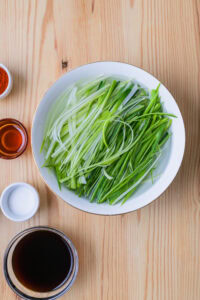
- Rinse and drain
- Gather the seasoning ingredients in a bowl
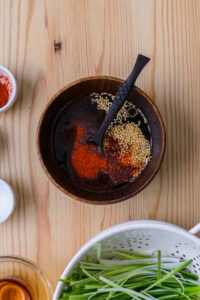
- Mix well
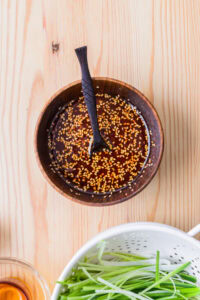
- Distribute the green onions in small serving bowls and add a little sauce to each portion
- Set aside
Ssamjang
- Gather all ingredients in a bowl
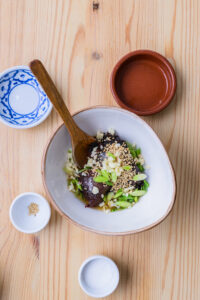
- Mix well
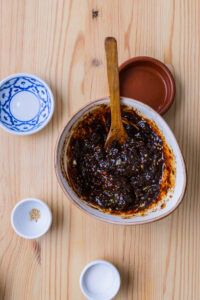
- Transfer to a serving bowl and set aside
Pork belly
- In a large bowl, mix the marinade ingredients
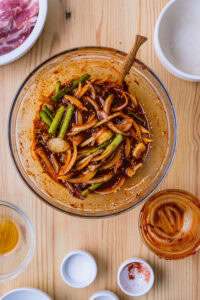
- Marinate the pork belly slices with the marinade
- Refrigerate for at least two hours
- Grill the pork belly over medium heat on a pan, barbecue, or griddle. Do not turn them too quickly and do not put too many on the pan at once

- Serve with ssamjang and pajeori
- Enjoy by putting pajeori and ssamjang in a lettuce or perilla leaf
Notes
Nutrition
Culinary sources
For the ssamjang and pajeori recipe, I used Maangchi’s delicious recipe
